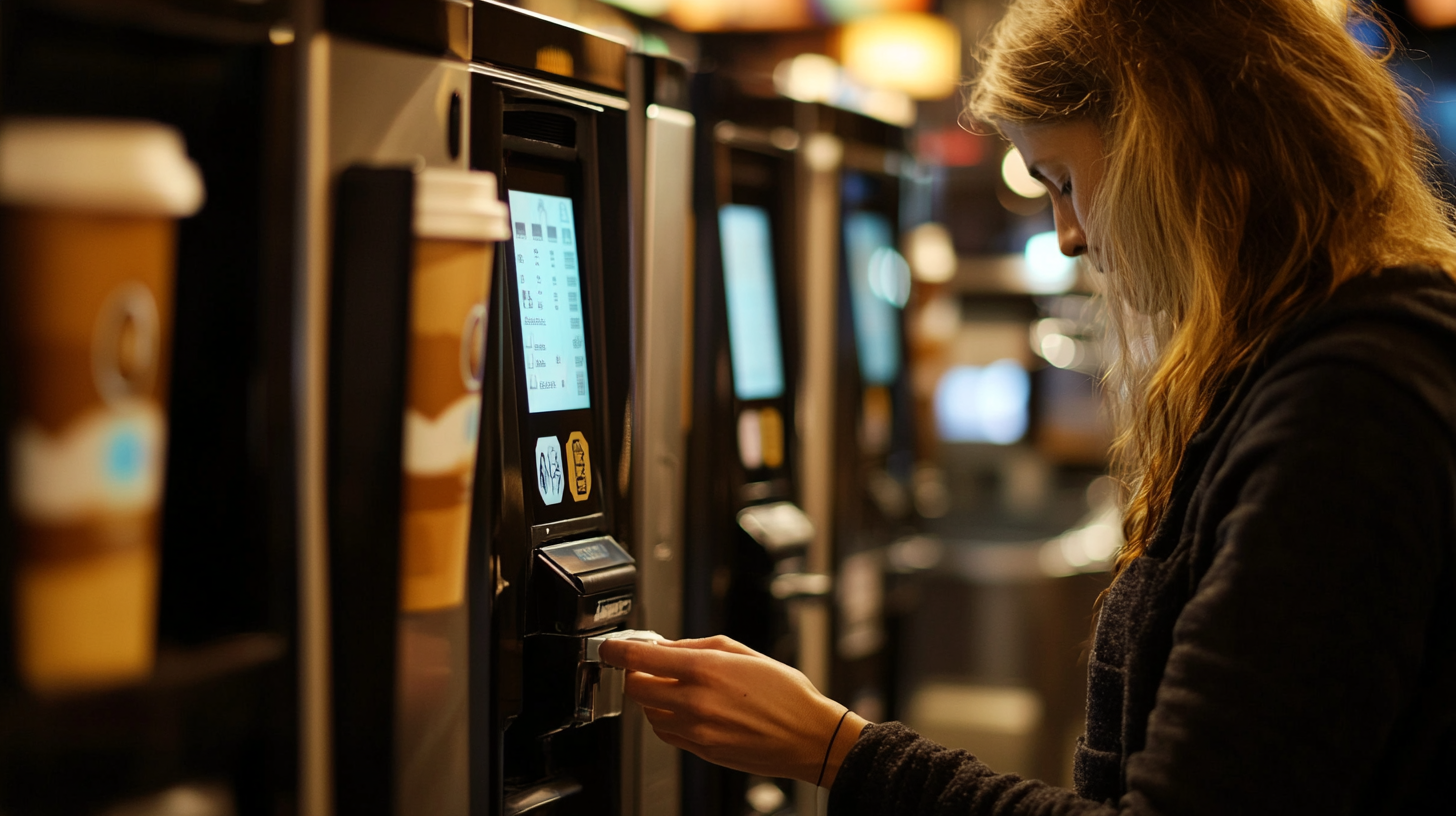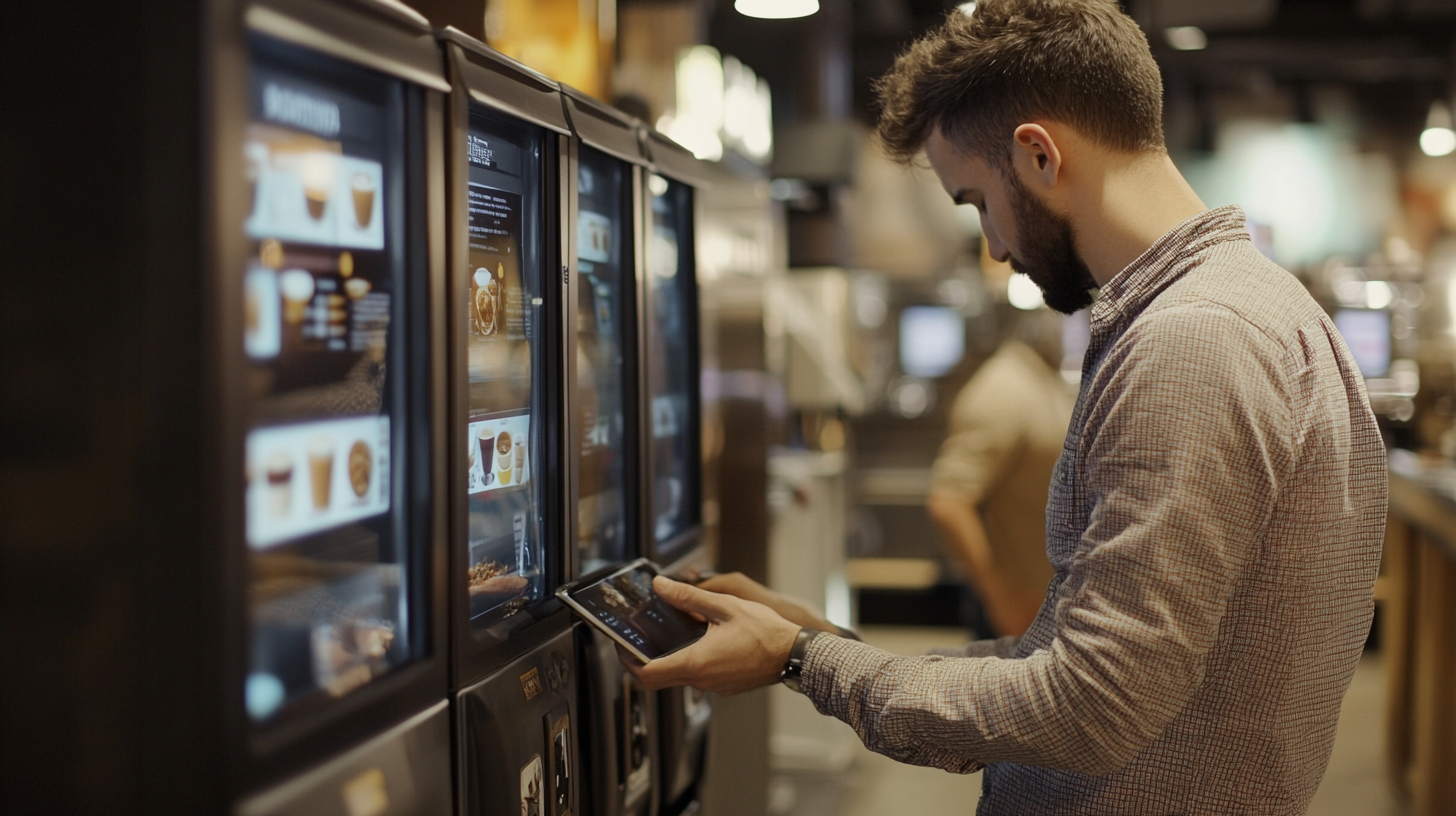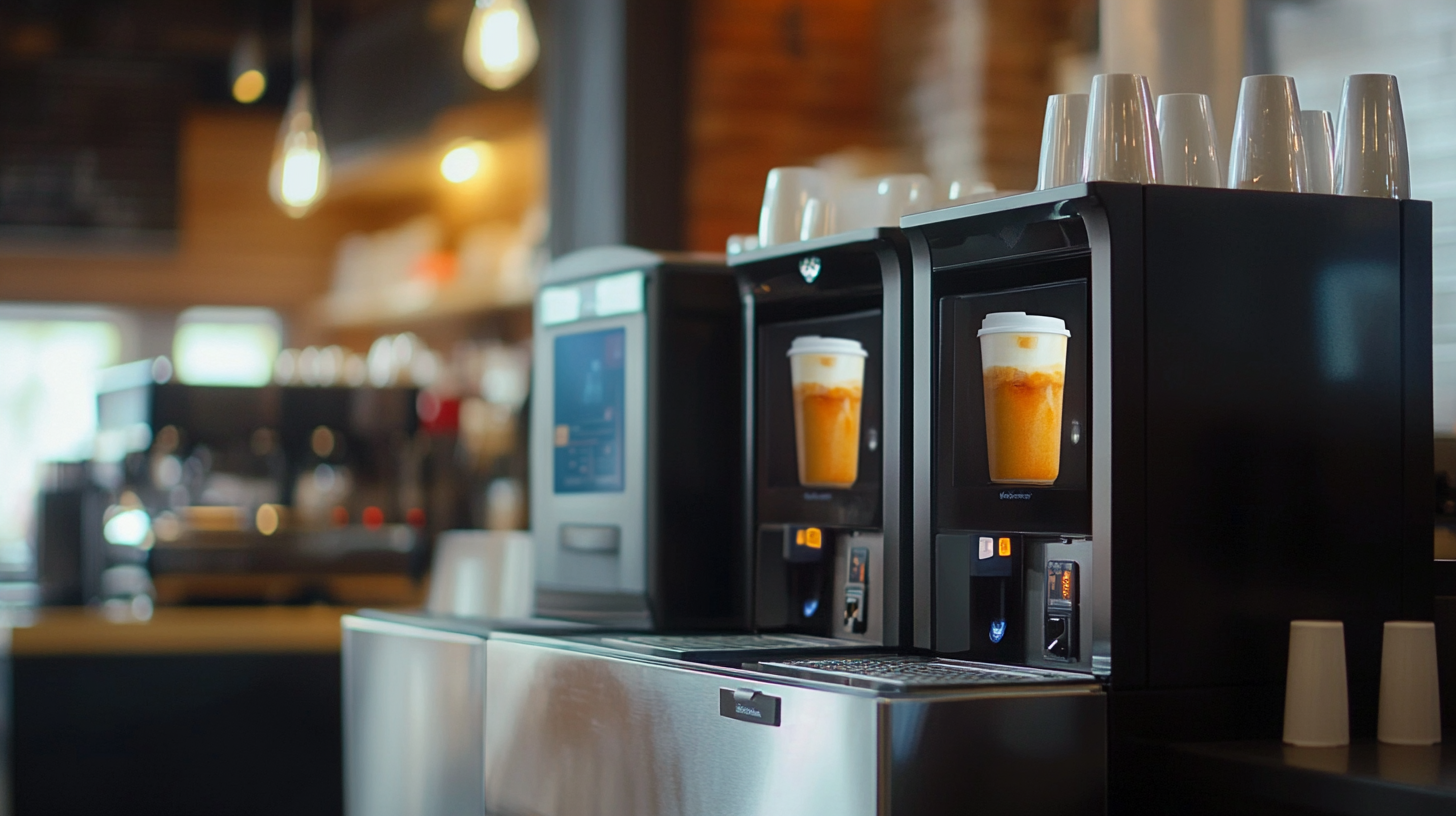Maximizing After Sales Support and Repair Savings with Automated Coffee Kiosks
As the demand for convenient coffee solutions continues to rise, the implementation of Automated Coffee Kiosks has transformed the way consumers access their favorite beverages on the go. According to the National Coffee Association, 62% of Americans consume coffee daily, and this trend is expected to drive an increasing number of businesses to adopt automated solutions to enhance their service offerings. Automated Coffee Kiosks not only streamline the ordering process but also significantly reduce operational costs associated with after-sales support and repairs. A recent report from Technavio highlights that the automated retail market is projected to grow by over 28% by 2025, emphasizing the need for businesses to capitalize on this advancement. By integrating automation into their coffee services, companies can improve efficiency and maximize their savings, while meeting the growing consumer demand for quick and accessible coffee options.

Understanding the Cost Benefits of Automated Coffee Kiosks in After Sales Support
Automated coffee kiosks are revolutionizing after-sales support, offering significant cost benefits that are difficult to ignore. According to a report by IBISWorld, the automated beverage vending industry has seen a remarkable growth rate of 7.6% annually, a signal that consumers appreciate the convenience and efficiency these machines provide. With lower operational costs compared to traditional coffee shops, automated kiosks reduce the need for extensive staffing, allowing businesses to direct savings toward maintenance and support costs. This shift not only enhances customer satisfaction by minimizing wait times but also optimizes resource allocation across the organization.
Moreover, a study by Allied Market Research highlights that businesses can achieve a return on investment (ROI) of up to 30% within the first year of deploying an automated coffee kiosk. By integrating advanced technology that facilitates easy maintenance and real-time monitoring, these kiosks minimize repair expenses and downtime. With predictive analytics enabling proactive service, organizations can resolve potential issues before they escalate, ultimately leading to enhanced uptime and customer loyalty. The financial advantages of automated coffee kiosks in after-sales support clearly demonstrate their value in both operational efficiency and customer engagement.
| Feature | Description | Cost Benefits ($) | Maintenance Savings (%) |
|---|---|---|---|
| Automated Ordering System | Streamlined customer ordering process | $5,000 | 20% |
| Remote Monitoring | Real-time performance tracking and alerts | $3,000 | 15% |
| Automated Maintenance Alerts | Proactive notifications for repairs | $2,000 | 25% |
| User-Friendly Interface | Intuitive design for customer and employee | $1,500 | 10% |
| Self-Service Functionality | Reduces the need for staff assistance | $4,000 | 30% |
Key Metrics for Evaluating Repair Savings from Automated Coffee Kiosks
Automated coffee kiosks are revolutionizing the way consumers enjoy their daily brew while offering businesses significant opportunities to enhance after-sales support and repair savings. To evaluate the financial benefits of these self-service machines, businesses should focus on key metrics such as maintenance costs, average downtime, and response time for repairs. By meticulously tracking these figures, companies can gain insight into the operating efficiency of their kiosks, paving the way for informed investment decisions.
One of the most crucial metrics is the total cost of ownership, which encompasses initial purchase, installation costs, and ongoing maintenance expenses. A diligent analysis of repair histories can reveal patterns that inform preventative maintenance schedules, ultimately minimizing the frequency and severity of repairs. Additionally, understanding the relationship between downtime and customer satisfaction is vital. If repairs can be completed swiftly, businesses not only save on costs but also enhance the overall customer experience, leading to increased loyalty and sales.
Moreover, evaluating customer interaction metrics post-repair is essential. Gathering feedback on service quality and machine performance post-incident can help identify areas for improvement. Continuous monitoring of these key performance indicators will facilitate a proactive approach to maintenance, ensuring that automated coffee kiosks remain operational and profitable.
Maximizing After Sales Support and Repair Savings with Automated Coffee Kiosks
This pie chart illustrates the key components of repair savings associated with automated coffee kiosks. The largest segment represents labor savings, followed by parts cost reduction, increased revenue, and maintenance efficiency, highlighting the overall financial benefits of implementing automated kiosks in after-sales support.
Market Trends: The Rise of Automation in the Coffee Service Industry
The rise of automation in the coffee service industry reflects a broader trend within the food processing and handling equipment market. As businesses seek to enhance efficiency and reduce costs, automated coffee kiosks are becoming increasingly popular. These self-service machines offer not only convenience for consumers but also sizable savings in after-sales support and repair costs for operators. The automated systems minimize human error and streamline operations, allowing for consistent product quality and quicker service times, which in turn enhances customer satisfaction.
Moreover, the market dynamics have shifted due to global events like the COVID-19 pandemic. Many companies have turned to automation to mitigate health risks associated with traditional service methods. The implementation of automated kiosks has proven essential in maintaining operations and ensuring customer safety by minimizing contact. The industry's focus on automation is expected to drive considerable growth, particularly as more establishments recognize the benefits of integrating technology into their service models. As demand for efficient and contactless coffee services continues to rise, the future of the coffee service industry looks promising, shaped by innovation and adaptability.
Strategies for Enhancing Customer Experience Through Automated Solutions
In today's fast-paced world, customer experience has become paramount, especially in the food and beverage sector. Automated coffee kiosks represent a strategic evolution in enhancing this experience. By allowing customers to order and customize their coffee at their convenience, these kiosks eliminate long wait times and provide a satisfying, user-friendly interface. The intuitive design of these systems enables patrons to tailor their beverages with just a few taps, creating a personalized experience that fosters customer loyalty.
Moreover, the use of automated solutions not only improves service efficiency but also minimizes the risk of human error. With precise machine calibration and consistent ingredient dosing, coffee quality remains high, which is essential for retaining discerning customers. Additionally, these kiosks can gather valuable data on customer preferences and behavior, enabling businesses to fine-tune their offerings and marketing strategies. The seamless integration of technology in customer service enhances operational efficiency, ensures quality control, and ultimately enriches the overall coffee experience in a way that meets the demands of modern consumers.

Case Studies: Successful Implementations of Coffee Kiosks and Their Financial Impact
Automated coffee kiosks have emerged as a transformative solution in the food and beverage industry, particularly for businesses aiming to enhance their after-sales support while reducing repair costs. Case studies illustrate how companies implementing these kiosks have experienced significant financial impacts. For instance, a coffee chain in the Pacific Northwest integrated an automated kiosk system that reduced labor costs by 30% while simultaneously improving customer service speeds. This streamlined service not only increased sales but also allowed for a more efficient response to maintenance needs, as the kiosks come equipped with self-diagnostic capabilities.
Another example comes from a retail outlet that installed coffee kiosks in their stores. By positioning these automated machines in high-footfall areas, they saw a 40% increase in coffee sales over six months. With real-time monitoring, the company could predict servicing requirements, which minimized downtime and maximized customer satisfaction. These successful implementations demonstrate that investing in automated coffee kiosks not only boosts operational efficiency but can also deliver substantial savings in after-sales support and maintenance, ultimately enhancing profitability.

